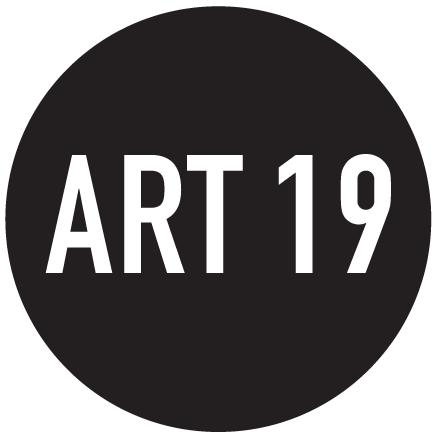Now 88, Richter is one of the world’s most important living artists. A 2019 list of the wealthiest Germans ranked him 230th (tied with over 30 others), with a fortune of €700 million. But back then, Gerd Richter (as he called himself at the time) was completely unknown in West Germany, despite some early successes in Dresden. These hard first months west—during which Richter designed and built carnival floats and Ema sewed children’s clothes to earn their keep—are the subject of a small exhibition mounted by the Gerhard Richter Archive at the Albertinum in Dresden.
Read MoreNEWS
“I am constantly reading a rather broad range of material, from history, fiction, to processes of cognition and even news (not the noise on social media!) – I’m curious to understand things from different perspectives. Listening and reading helps decode the complexities of human feelings. I’m interested in how we construct our mental space, what we like to remember and even forget, consciously, unconsciously or by coercion.”
Read MoreFrom August 29 until November 29, 2020 the Gerhard Richter Archiv at the Saxony state museum Albertinum in Dresden showcases Gerd Richter aka Gerhard Richter before he became famous and found his own style(s). The cabinet exhibition Gerd Richter 1961/62. Es ist, wie es ist / It is, as it is and the accompanying publication by Dietmar Elger explore the hitherto largely unkown period in Gerhard Richter’s life from his flight from Dresden in Communist East Germany (GDR) to the Federal Republic of Germany at the end of February 1961 until the beginning of his “official” oeuvre Richter began at the end of 1962 with the painting Tisch, which he designated artwork number one.
Read More“The architectural shape of the boat lets the passengers only move forward. We struggle to define our path, our human condition forces us to look forward searching for a destiny although we have no safe points of orientation, we travel on the open ocean without a sense of direction.“
Read MoreDavid Galperin, a Sotheby’s senior vice president, said the “significant boom in prices for late 1980s abstract works” between 2012 and 2015 was well deserved, given the surge of interest among contemporary collectors. Several experts noted strong demand from Asian collectors in particular during the peak period.
Yet “there isn’t one overall market, but a number of different ones,” for Richter’s work, Galperin says. “He constantly reinvented himself, so there are many discrete bodies of work. Prices at auction reflect that and you see different shifts occurring in submarkets.”
Read MoreTHE DANCERS of Cape Town City Ballet may still be separated from the theatre, but in a stunning innovation of the socially-distanced era, they have made a sculpture gallery their new stage.
The local ballet company teamed up with the Norval Foundation to create a dance film combining the artistry of its dancers with the sculptures of internationally-renowned artist William Kentridge.
Read MoreThe exhibition will also present the views of contemporary artists and how they inspired further generations and artists in their works, such as visual artists Lamia Ziadé, Shirin Neshat with images from the Looking for Oulm Khaltoum (2017) film.
Read MoreIn the mobile art installation, “Untitled” (2008-09), a metal gate swings back and forth, hitting the wall it is suspended upon. Eventually, with the impact, the wall cracks and starts breaking. The artwork is about the persistence of movement and the impossibility of containing aspirations.
Read MoreAmongst other artists such as Virgil Abloh, Mark Grotjahn, Alex Israel, Barbara Kruger, Catherine Opie, Pipilotti Rist, Hank Willis Thomas, and The Andy Warhol Foundation for Visual Arts, Yoko Ono is participating to MOCA’s limited production collection of face masks. The artwork A Piece of Sky was previously engaged by Ono in Art 19 Box One collection benefitting Amnesty International.
Read MoreFor the first time, the space that usually advertises current exhibitions will be turned over to the Japanese-born conceptual artist Yoko Ono. The artist created two 24-by-26-foot banners, one that reads “DREAM” and one that reads “TOGETHER,” during lockdown as a way to address the longing for connectivity felt by so many.
Read MoreThis novel collaboration, called “Studio Berlin,” will launch on September 9 in the midst of the annual Berlin Art Week and on the eve of the city’s Gallery Weekend. The works of 80 contemporary artists, including major names like Olafur Eliasson, Cyprien Gaillard, Wolfgang Tillmans, Rosemarie Trockel, and Isa Genzken, will be on view at the club. The exhibition will sprawl over Berghain’s three main dance floors and will maintain a focus on artists who live and work in Berlin—at least some of the time.
Read MoreJust like other museums and galleries across the world, Gana Art Center in Pyeongchang-dong and Gana Art Nineone in Hannam-dong, both located in the heart of Seoul, were hit hard by the coronavirus pandemic.
The two galleries saw a major drop in the number of visitors, down to about 20 a day on average, in the weeks following the outbreak.
But the two art spots are seeing a surge of visitors after they began displaying pieces by Japanese artist Chiharu Shiota from July 18.












